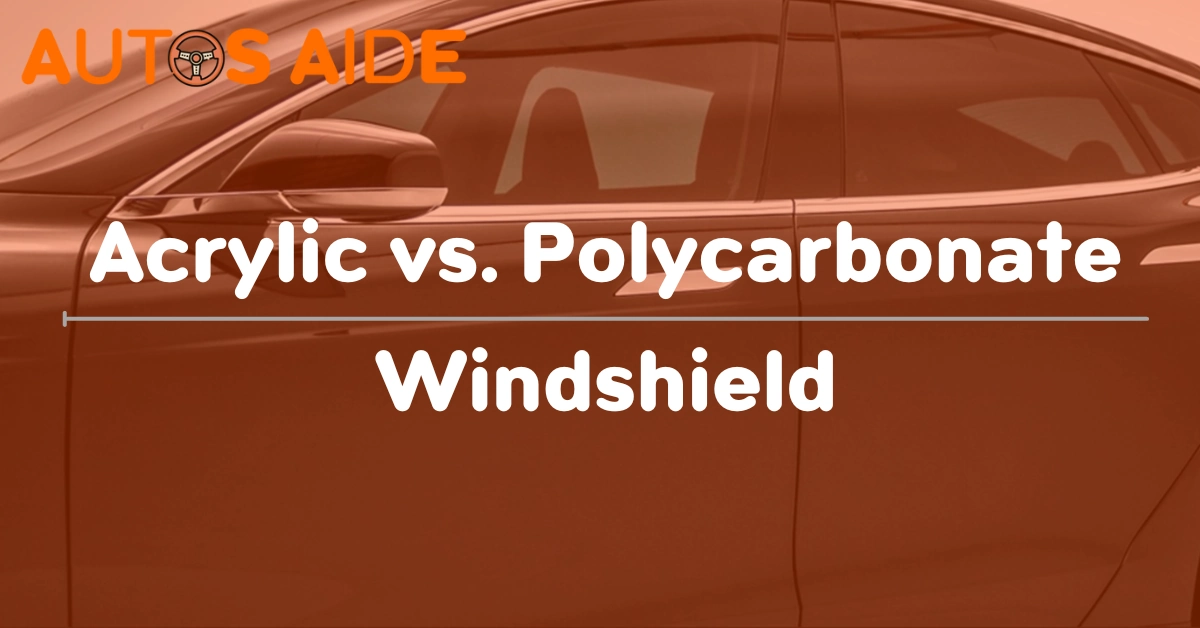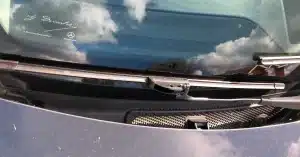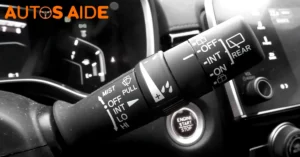Polycarbonate and acrylic are two of the most popular windshields materials. So, when shopping for a new windshield, many people have a hard time trying to decide between the two. If you have a similar dilemma, go through my acrylic vs. polycarbonate windshield comparison to choose the best one for you.
Read More: XPEL XR vs. XPEL XR Plus
Acrylic vs. Polycarbonate Windshield
Flexibility
Acrylic is more flexible than polycarbonate. So, it’s a much better fit for custom windshields. You can also polish out dents in acrylic windshields, which is almost impossible in their polycarbonate counterparts.
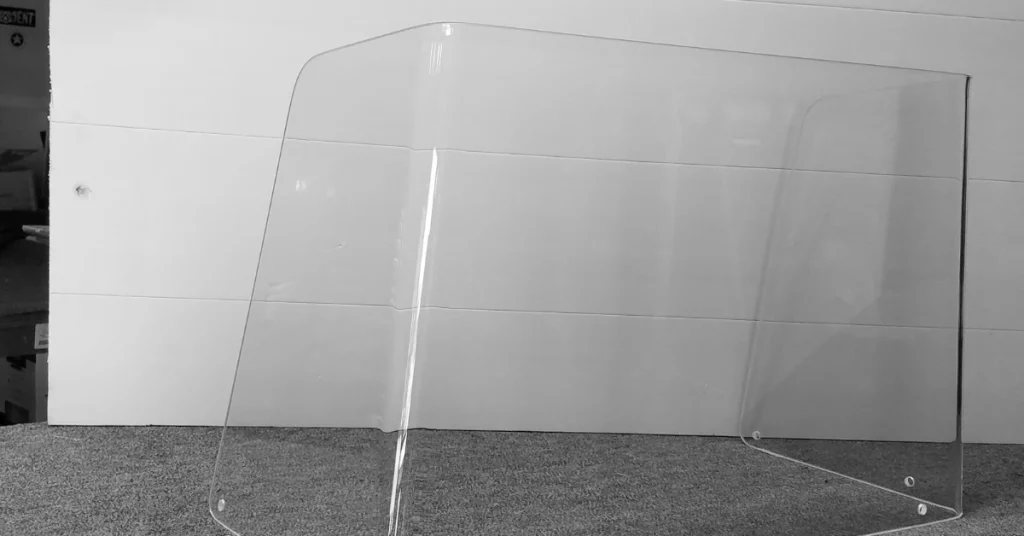
UV Resistance
Acrylic also wins the race when it comes to UV resistance. You might think it’s not much of a big deal since you will ride the bike underneath the sun. The windshield will not protect you from the scorching heat of the sun and its UV rays.
You should choose a UV-resistant windshield for your bike regardless because the UV rays can damage the windshield over time. Since acrylic windshields have higher UV ray tolerance, they will not get damaged easier.
Sun exposure tends to develop a yellow tint in polycarbonate windshields. These will not happen in acrylic windshields. Acrylic plastic can survive years under sunlight without undergoing noticeable visible changes.
Read More: 20 vs. 35 Windshield Tint
Impact Resistance
Polycarbonate windshields are clear winners in this regard. When you are cruising through the highways at high speed, even a tiny pebble can make a significant impact on your windshield. Acrylic and polycarbonate both exhibit better shatter resistance than glass.
You can expect acrylic windshields to be 17 times more crack resistant than glass. Polycarbonate, on the other hand, is no less than 200 times stronger than acrylic. High-grade polycarbonate can also deflect bullets and other high-speed projectiles.
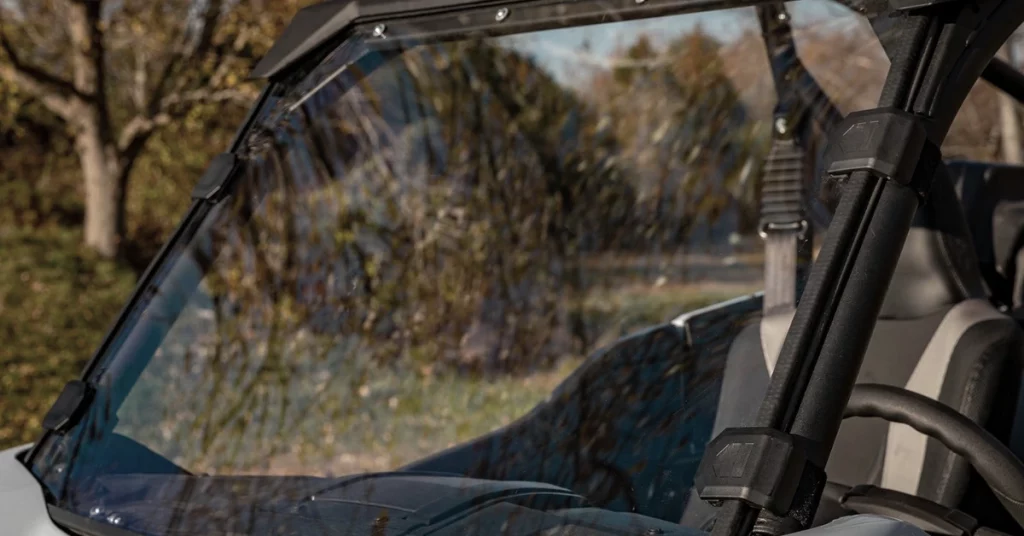
Scratch Resistance
Despite having better impact resistance, polycarbonate windshields are not as resilient to scratching as acrylic windshields. They can scratch quite easily. Acrylic is less scratch-prone, and it’s easier to remove scratches from acrylic windshields than polycarbonate ones.
What happens when acrylic does get scratched? You can try removing them using sandpaper. First, take a piece of 800-grit sandpaper, wet it in water and rub the scratches in a circular motion. Then repeat the process with dry 800-grit sandpaper.
Move to a higher grit count if the scratches don’t go away. 1200-grit sandpaper should get the job done. Clean the scratched area with a non-abrasive cloth afterward. Finish up using acrylic polish. It will make the windshield surface smooth.
Unfortunately, removing scratches from polycarbonate windshields is not so straightforward. You can try chemical polishing, but there is no guarantee that it will work. Sometimes, changing the windshield is the only way to get a clear windshield.
Weight
This is a draw. Both polycarbonate and acrylic windshields are exquisitely lightweight. If you don’t want to burden your vehicle with a heavy windshield, you can’t go wrong with either acrylic or polycarbonate.
Read More: How To Clean Polycarbonate Windshield?
Which Is The Best Plastic For Windshield?
I’ll have to say acrylic. I know many would oppose me, but I think acrylic provides better value than polycarbonate as windshield material. It’s lightweight, less scratch resistant, more suitable for custom designs, and comes at a lower price. Polycarbonate is more impact-resistant, but other than that, the durability is more and less the same.
Are Polycarbonate Windshields Scratch Resistant?
No, they are not. Some windshields come with an anti-scratch coating. Those windshields don’t get scratched easily, but they are more expensive. Also, polycarbonate windshields can be a nuisance to clean once they get scratched. Chemical polishing might restore the windshield to its original clarity. But it’s far easier to remove scratches from polycarbonate windshields.
Which Is More Durable Acrylic Or Polycarbonate?
Polycarbonate is way more durable than acrylic. The material’s durability stems from its robust chemical structure. Molecules in polycarbonate are densely packed together because of their superior intermolecular force. Therefore, it exhibits a higher level of resistance. Polycarbonate is 200 times stronger than acrylic.
Final Opinion
Acrylic vs. polycarbonate windshield is a divisive topic in auto forums. I tried to give you an organized lowdown on both materials. Hopefully, it helped you to make up your mind. Both of them are good picks for windshields, but by knowing what works better for you, you can make the best choice.

